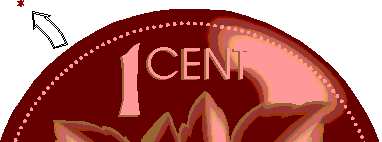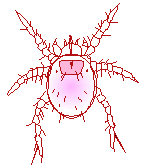
LINKS
Main Menu
Site Map & Links
Insects
Spiders
MOSQUITOES
Over two dozen species of mosquitoes inhabit the Windsor region and 58 kinds occur in Ontario.
Most kinds will not venture into the open prairie sites during the day. The adults will die from desiccation if exposed to dry sunny conditions and will only emerge from wooded areas at dusk or on dull, humid days.
Floodwater mosquitoes such as Aedes vexans lay their eggs in damp places just above the water line of temporay ponds. The eggs hatch after a warm rain and may produce a new generation of adults in as little as a week. Eggs can also remain dormant for over two years during drought conditions.
Ojibway's largest species, Psorophora ciliata, is found only during wet summers when other mosquitoes are abundant. Their larvae are carnivorous and each one consumes dozens of smaller mosquito larvae.
Chigger

Blackflies, mosquitoes, deerflies, no-see-ums or ticks may intrude on peace of mind elsewhere but a tiny larval mite creates equal havoc at Ojibway and other locations in Essex and Kent Counties.
Chiggers (Trombiculidae)

Chiggers are a formidable animal of the prairie. Each year from mid June into September hikers hesitate before stepping off a trail, knowing these tiny beasts are lurking in wait.
Adult chiggers, also called harvest mites, are predators of other invertebrates in the leaf litter but their larvae require a single meal from a vertebrate host such as a mouse, bird or YOU.
Chiggers are found in open grassy areas such as marshes, prairies and old fields. They wait patiently, for weeks if needed, for a host to brush past. Chiggers do not burrow under the skin but simply insert straw-like mouthparts for a leisurely meal of lymph fluids and digested cells. The mite then drops off never again to feed on a human. They are too small to see or feel but unfortunately many people have a delayed allergic reation to the bite. This causes an intensely itchy bump that may persist up to two weeks. Bites are concentrated around the top of socks, backs of the knees, waist line and areas where clothing is tight.
PREVENTION
Insect repellant is effective in discouraging chiggers. Tuck your pant legs into your socks and spray socks and pant legs with your favourite brand of DEET. Powdered sulphur is also effective but treated clothing must be washed separately. It also helps to wear knee high boots and shower and wash your clothing after a walk. Stay on trails and avoid sitting in grassy areas to avoid chigger bites.


